Petrol models
Note: The description is given on the example of models 1.8 and 2.0 liters.
1. Details of the installation of the fuel tank and its components are indicated on Ref. illustrations.
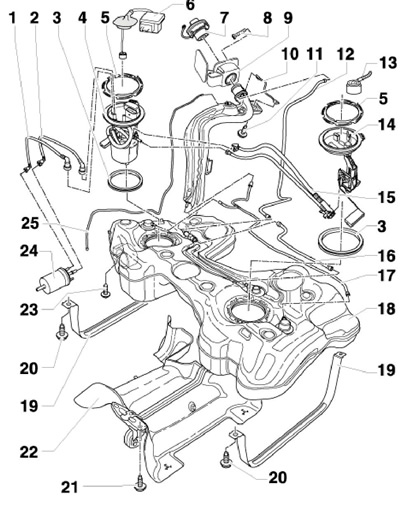
11.1 Fuel tank installation details and components (petrol models)
1 Fuel supply line, black
2 Fuel return line, blue
3 O-ring, to be replaced, inserted dry, only the inner flange seal is lubricated with fuel (for installation)
4 Fuel supply module, with sensor "G" fuel reserve
5 Retaining ring, 110 Nm
6 block "J538" fuel pump control, ECM adaptation required after replacement
7 Fuel tank cap
8 Fixing screw
9 Neck assembly, with rubber cup
10 Body ground connection
11 Bolt, 11 Nm
12, 16, 17 Vent line
13 Sensor wiring connector 14
14 Sensor #2 "G169" fuel reserve
15 Suction jet pump, fixed on sensor housing 14
18 Fuel tank
19 Clamp
20 Bolt, 25 Nm, to be replaced
21 Bolt, 23 Nm
22 Heat shield, riveted together with exhaust pipe hanger
23 Bolt, 3 Nm
24 Fuel filter
25 Vent line, attached to the side of the tank
2. Empty the tank and remove the tools used for this (see Section 3).
3. On models prior to 06/2010, remove sensor cover #2 "G169" and unplug it (right arrow to resist. illustrations).
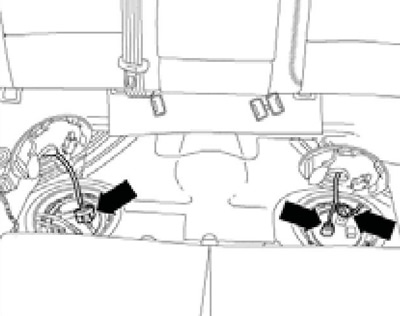
11.3 Fuel tank wiring connectors
4. Clean the filler neck and surrounding area, then open and plug it with a sponge to keep dirt out.
5. Remove the rear right wheel and rear right wheel arch locker. Remove the bolts (1 per resist. illustrations) filler neck, unhook the electrical wiring from the bracket (2) top and bottom of the neck.
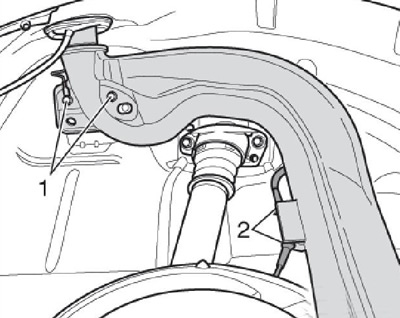
11.5 Neck fixing
6. Disconnect the white vent line (1 per resist. illustrations) and black feed line (2). On models with an additional heater, additionally disconnect the supply line of the metering pump "V54".
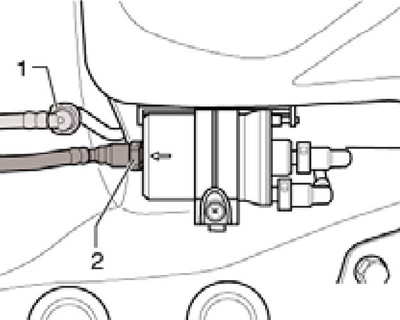
11.6 Connector
7. Remove the rear cross member of the central tunnel (see resist. illustration). Unhook the rear muffler from the two clamps, loosen the double clamp nuts and remove the rear exhaust pipe suspension bolts. Remove the rear muffler.
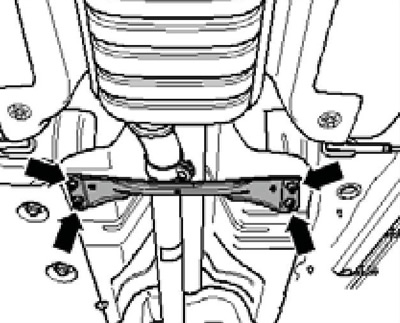
11.7 Rear cross member of the tunnel
8. On all-wheel drive models, remove the propeller shaft (see chapter 8), disconnect the block connector "J492" all-wheel drive, release its wiring (arrows in illustration 11.9) and set aside.
9. Turn out bolts (2 and 6 on resist. illustrations), support the tank with a transmission jack, unscrew the bolts (1, 3, 4 and 6) and lower the tank a little. Together with an assistant, remove the tank from the jack, passing the neck between the body and the rear suspension.
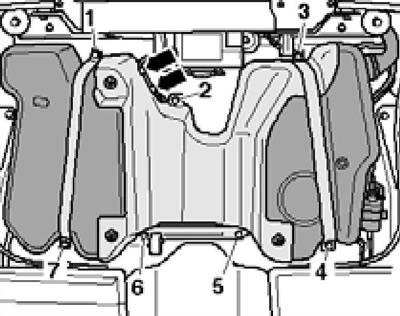
11.9 Fuel tank fixing
10. Before installing, check and, if necessary, remove corrosion from both ground connections. Earth wire (1 per resist. illustrations) must be firmly attached to the ring (2) \ contact (4) should hang on the tank (3) and must be fixed using a spacer sleeve (5).
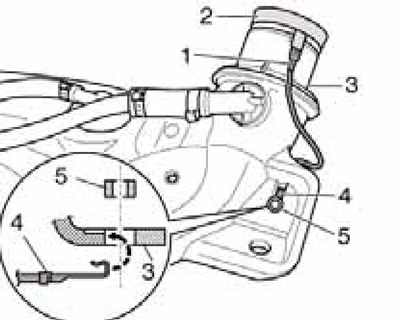
11.10 Earth connection on the tank
11. Installation is carried out in the reverse order. Arrow (2 in illustration 3.18) on the cover must face forward.
Diesel models
12. Details of the installation of the fuel tank and its components are indicated on Ref. illustrations on the example of TDI-CR models.
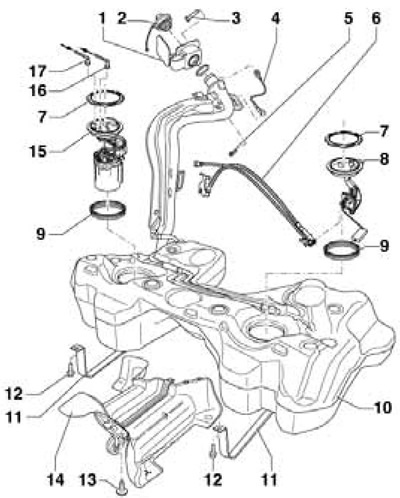
11.12 Fuel tank installation details and components (diesel models TDI-CR)
1 Neck assembly, with rubber cup
2 Fuel tank cap
3 Support
4 Body ground connection
5 Bolt, 10 Nm
6 Jet pump
7 Retaining ring, 110 Nm
8 Sensor #2 "G169" fuel reserve
9 Seal, to be replaced
10 Fuel tank
11 Clamp
12 Bolt, replaceable, 25 Nm
13 Bolt, 25 Nm
14 Heat shield
15 Fuel supply module, with sensor "G" fuel reserve
16 Fuel supply line, black, to the fuel filter
17 Fuel return line, blue, from fuel filter
